Το Digital Fabrication ως αντίληψη στον σχεδιασμό κάθε κλίμακας
DS.WRITER:
Vasilis Xifaras
Κεντρική Εικόνα: Niklas, 2022, VR Designed 3D Printed Porcelain
3D λογισμικά και εκτυπωτές, laser cutters, θερμό σύρμα (σύρμα θερμικής κοπής), καθώς και συμβατική μοντελοποίηση, μπορούν, υπό την κατεύθυνση του designer, να παραγάγουν ένα προϊόν που πλέον δεν περιορίζεται σε μέγεθος. Αυτός ο τρόπος δημιουργίας προσφέρει μια νέα, εξεζητημένη αισθητική, ενώ μπορεί να γεφυρώσει το χάσμα μεταξύ ιδέας και λειτουργικότητας, αφού η ανταπόκριση του αντικειμένου μπορεί να προβλεφθεί και αναλυθεί ανά πάσα στιγμή. Σε συνέχεια της συζήτησής μας με τον Ευτύχη Ευθυμίου, ζητήσαμε από τον Νίκο Αθανασόπουλο (Niklas) και τον Αλέξανδρο Βαζάκα να μας αναλύσουν όλα αυτά που κάνουν το digital fabrication τόσο ξεχωριστό.
Sealed Earth – Niklas
Το studio - gallery κεραμικών Sealed Earth απευθύνεται σε όλους όσους θέλουν να εκφραστούν με πηλό, χρησιμοποιώντας παραδοσιακές και σύγχρονες τεχνικές. Ο Niklas, μέλος της δημιουργικής ομάδας, χρησιμοποιεί την τεχνολογία της τρισδιάστατης εκτύπωσης κεραμικού. Βασικό μέρος του πεδίου διερεύνησής του αποτελούν η σχεδίαση κεραμικών αντικειμένων σε περιβάλλον εικονικής πραγματικότητας (VR) και η υλοποίησή τους μέσω της τεχνολογίας τής τρισδιάστατης εκτύπωσης. Ο ίδιος εμπνέεται τις μορφές των δημιουργιών του από ιδέες και φόρμες, που με τα χρόνια συσσωρεύονται στο υποσυνείδητό του και αναδύονται σταδιακά.
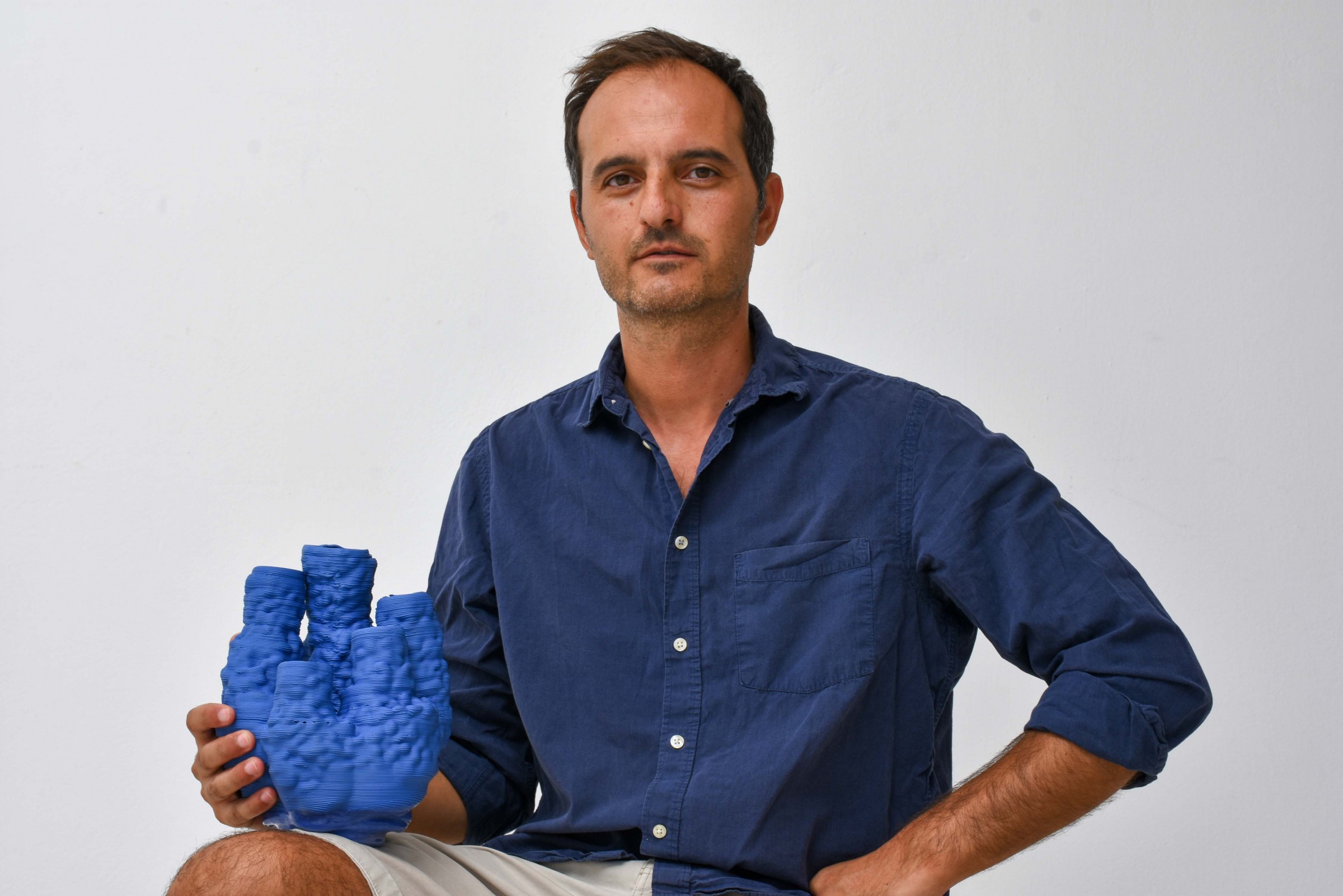
Φωτ: Πηνελόπη Μασούρη
TUC Digital Fabrication Laboratory – Αλέξανδρος Βαζάκας
Το εργαστήριο Digital Fabrication του Πολυτεχνείου Κρήτης ερμηνεύει τη σύγχρονη τεχνολογία ως ένα εργαλείο παραγωγής μη τυποποιημένων μορφών, χωρίς πρόσθετο κόστος. Με στόχο τον καινοτόμο σχεδιασμό προς όφελος της κοινωνίας, το εργαστήριο, μαζί με το TUC Tie Lab (Transformable Intelligent Environments Laboratory), μελετούν τις δυνατότητες των υλικών, φυσικών και τεχνητών, ώστε μέσα από έναν ανθρωποκεντρικό σχεδιασμό να προκύπτουν χώροι και αντικείμενα που διακρίνονται από εργονομία, προσαρμοστικότητα, ενώ αλληλεπιδρούν με το περιβάλλον αλλά και την ανθρώπινη ψυχολογία.
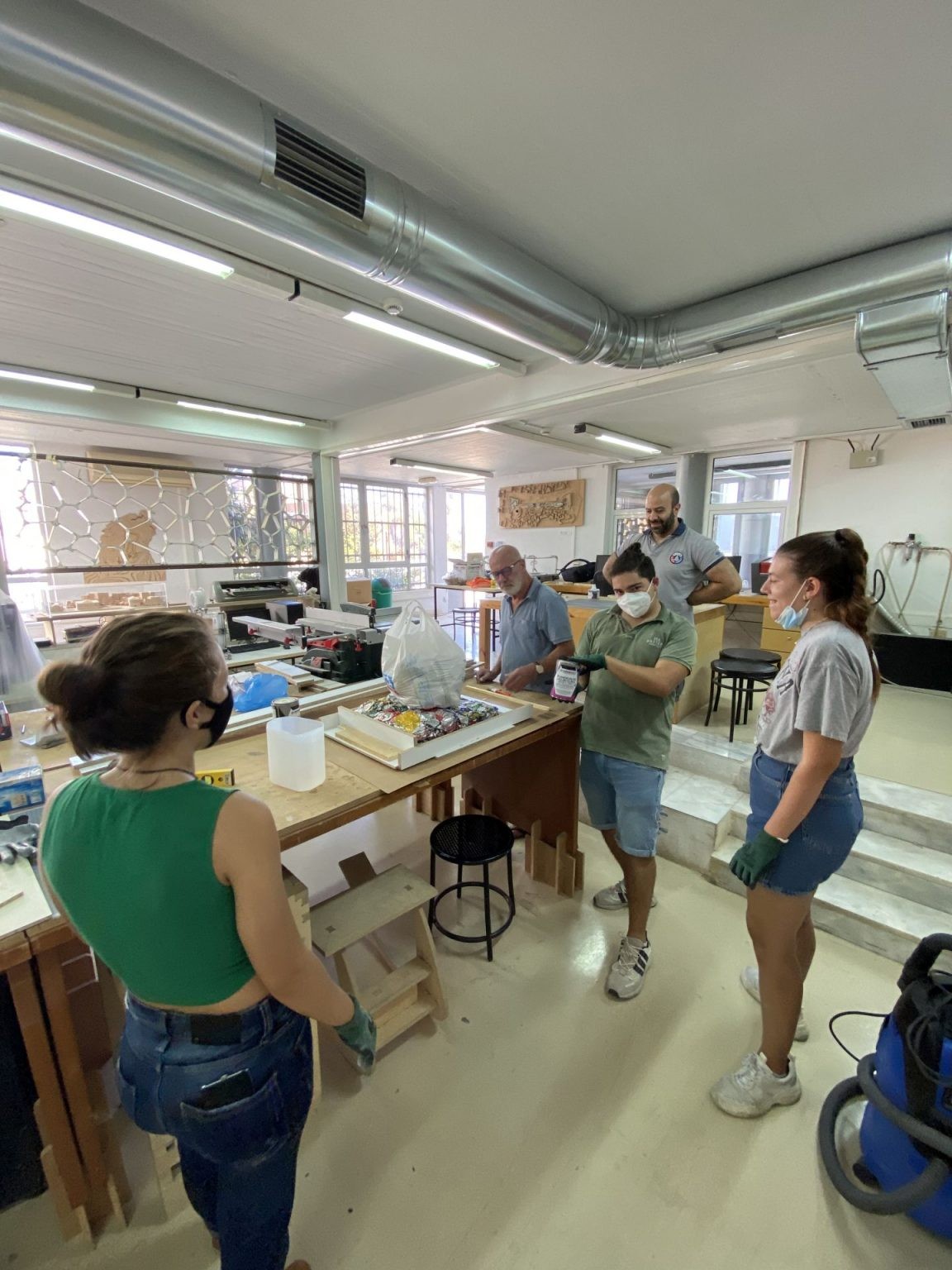
Φωτ: fablab.tuc.gr
Ποια είναι τα πλεονεκτήματα και τα μειονεκτήματα που φέρνει το Digital Fabrication στον σχεδιασμό; Είναι το κόστος του εξοπλισμού και των υλικών απαγορευτικό για πειραματισμούς;
Niklas: Η επαναστατικότητα του Digital Fabrication οφείλεται στο γεγονός ότι εισήγαγε τα μέσα για εξειδικευμένη παραγωγή στη δημιουργική βάση, με αποτέλεσμα να μιλάμε για άμεση πρόσβαση σε εργαλεία που παλαιότερα ήταν προσβάσιμα μόνο από τη βιομηχανία. Κατά συνέπεια, ο σχεδιασμός και η παραγωγή του τεχνουργήματος ενσωματώθηκαν. Ενσωματώθηκαν σε τέτοιο βαθμό που η σχεδίαση είναι συνδεδεμένη τόσο με την παραγωγή - κατασκευή, που μερικές φορές, τα σχέδια είναι αδύνατο να υλοποιηθούν με άλλα μέσα.
Σε ό,τι αφορά τον εξοπλισμό, η δική μου εμπειρία περιλαμβάνει ένα μεγάλο μέρος open source (ή open hardware), που σημαίνει ότι η πληροφορία, τα σχέδια κατασκευής και ό,τι άλλο χρειαζόμουν ήταν διαθέσιμα στο cloud. Από εκεί και πέρα, οι τρόποι που τα χρησιμοποίησα για να μπορέσω να υλοποιήσω αυτά τα σχέδια, ήταν καθαρά στο χέρι μου. Οι εκτυπωτές που χρησιμοποιώ είναι κατασκευασμένοι από εμένα, και μέσα στα χρόνια έχω μάθει τη διαδικασία ώστε να έχω τον πλήρη έλεγχο και του κώδικά τους αλλά και του μηχανικού τους μέρους.
Για να δώσω την αίσθηση της αναλογίας κόστους εξοπλισμού - πειραματισμού, θα χρησιμοποιήσω ως παράδειγμα τη φωτογραφία. Σήμερα όλοι έχουμε μια κάμερα στα χέρια μας και μπορούμε να πειραματιστούμε με την τέχνη της φωτογραφίας. Όταν όμως η δημιουργική αναζήτηση μας οδηγήσει σε μια εξειδικευμένη επεξεργασία, ας πούμε στη χημική εκτύπωση φιλμ, εκεί ο πειραματισμός με το ίδιο μέσο αλλάζει το επίπεδο κόστους εξοπλισμού - πειραματισμού, και επαφίεται στην επιθυμία του καθένα/καθεμίας να την πραγματώσει. Κάτι τέτοιο ισχύει και στην τρισδιάστατη εκτύπωση.
Στη Sealed Earth έχουμε δημιουργήσει τη συνθήκη για να μπορέσουν καλλιτέχνες ή δημιουργοί να ενσωματώσουν την τεχνολογία της τρισδιάστατης εκτύπωσης κεραμικού στο έργο τους. Προσπαθούμε και επιλέγουμε έργα με εικαστικό ή εννοιολογικό ενδιαφέρον και καλλιτέχνες ή σχεδιαστές που θέλουν να εξερευνήσουν τα όρια του υλικού ή της τεχνολογίας. Δουλεύουμε μαζί από το σχέδιο μέχρι την υλοποίηση.
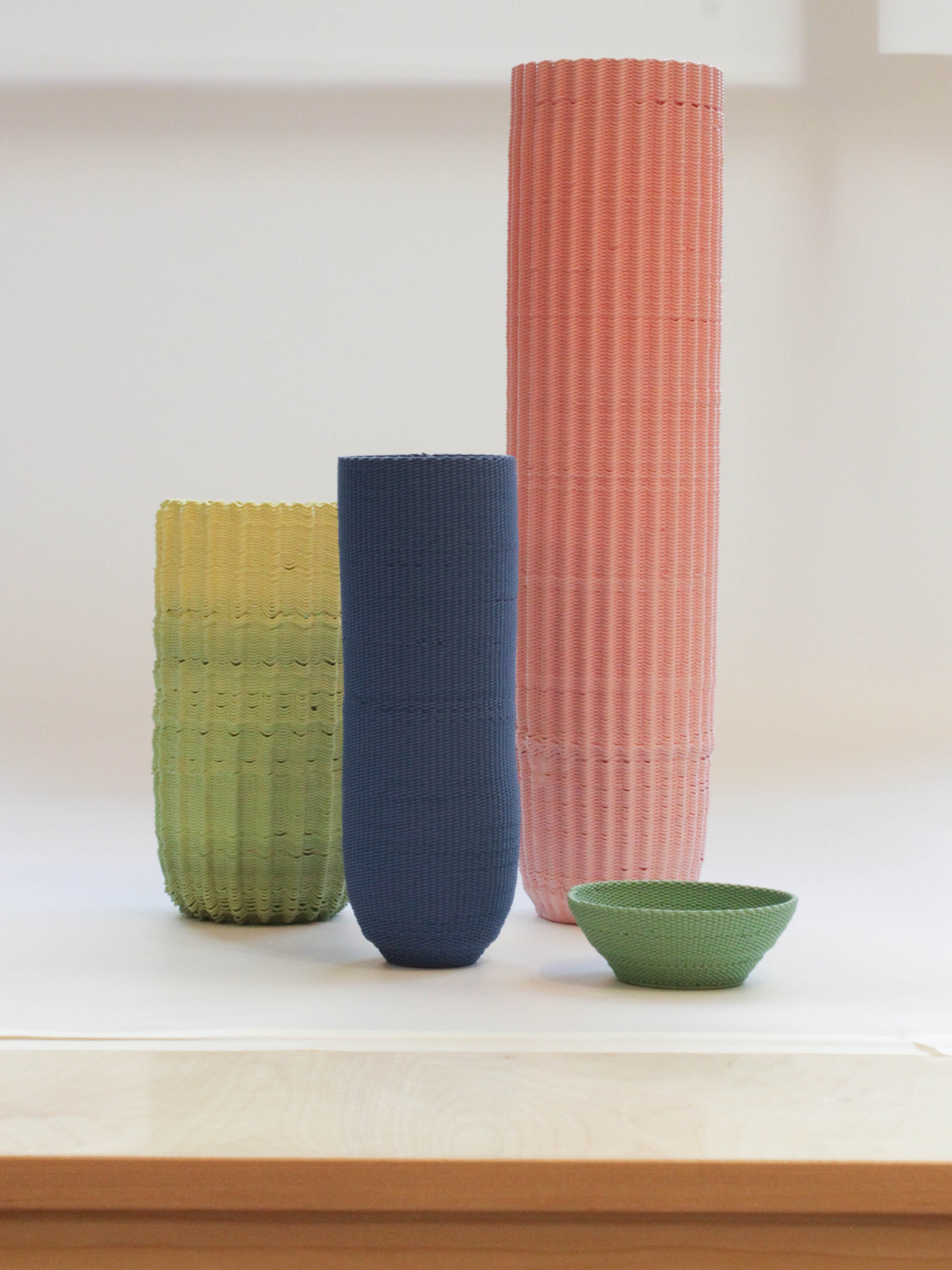
Objects of an Emergency για το Sealed Earth, παρουσιάστηκε στο Salone del Mobile, Μιλάνο, 2021
Α. Βαζάκας: Βλέπω το digital fabrication ως ένα μέσο απελευθέρωσης και εκδημοκρατισμού του design, καθώς επιτρέπει στον καθένα να κατασκευάσει πρωτότυπα με σχετικά μικρό κόστος. Μας δίνει αφενός τη δυνατότητα να μην χρειαζόμαστε εγκαταστάσεις με ακριβό εξοπλισμό προκειμένου να εξελίξουμε ένα προϊόν, και αφετέρου, σε συνδυασμό με τα κατάλληλα λογισμικά, να πειραματιστούμε με διαφορετικές τεχνικές και μορφές, απευθείας πάνω στο υλικό. Ακόμη, είναι σημαντική, θεωρώ, η τάση που υπάρχει στη συγκεκριμένη αγορά για το λεγόμενο «file to fabrication» προϊόν, όπου ο αγοραστής κατασκευάζει σε ένα εργαστήριο μόνος του το τελικό προϊόν, έχοντας κατεβάσει και προσαρμόσει το αρχείο του σχεδιαστή (designer). Τέλος, οι τεχνολογίες αυτές επιτρέπουν μια νέα σύνδεση του design με τα υλικά, επαναφέροντας τη «μαστοριά» τού παραδοσιακού τεχνίτη, χωρίς την κοπιαστική χειρωνακτική εργασία που αυτό απαιτούσε. Στα μειονεκτήματα θα κατέτασσα όντως το κόστος και τη συνθετότητα ορισμένων διαδικασιών, αλλά σε κάθε περίπτωση, οι τεχνολογίες αυτές γίνονται όλο και πιο προσιτές, τόσο οικονομικά όσο και από πλευράς δυνατοτήτων customization από τους σχεδιαστές των ίδιων των μηχανημάτων.
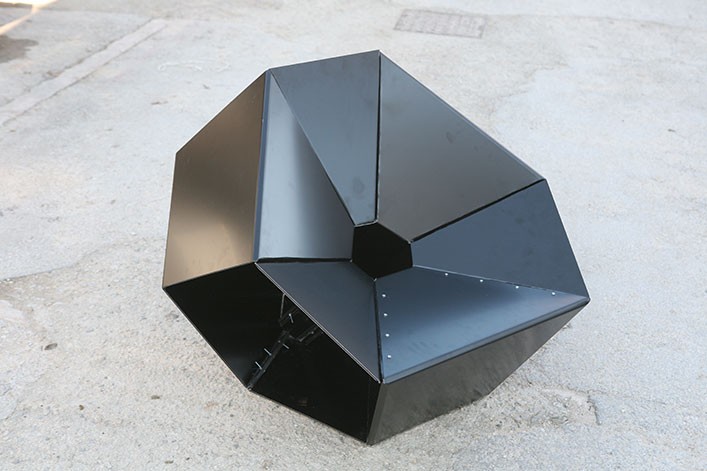
Diamond Chair, 2015 | Καθηγητής: A. Βαζάκας, Ομάδα φοιτητών: E. Bolou, E. Mougassi, C. Sarandidis για το μάθημα “Parametric Design 1”
Θα μπορούσε το εγχώριο design να βρει το μέσο έκφρασης και παραγωγής του σε ψηφιακά μέσα; Αν ναι, ποια κρίνετε εσείς ότι θα ήταν τα απαραίτητα εφόδια (προγράμματα, εξοπλισμός, εκπαίδευση και ενημέρωση);
Niklas: Στις εποχές που ζούμε, το “εγχώριο” ίσως είναι και μια έννοια αναχρονιστική. Οι προσλαμβάνουσες είναι τόσο πολλές και η πολυπολιτισμικότητα τόσο εμφανής, που η έννοια της εντοπιότητας ξεθωριάζει. Το εγχώριο ορίζεται από μια γραμμή στον χάρτη που, και μόνο από τα γεγονότα των τελευταίων χρόνων, βλέπουμε ότι συχνά παραβιάζεται, με αποτέλεσμα εκατομμύρια ανθρώπων να μετακινούνται αναζητώντας καινούριους τόπους εγκατάστασης. Οπότε θα πω μια ευχή παρά μια άποψη. Ας απελευθερωθούμε από τον εγωισμό του δικού μας και της ταυτότητάς μας, και ας επιτρέψουμε και σε άλλες σκέψεις, κουλτούρες, παραδόσεις να έρθουν και να ζυμωθούν με αυτό που θεωρούμε ως δικό μας. Η πολιτιστική κληρονομιά δεν έχει θέση στον χώρο αλλά στον χρόνο, είναι έννοια, όχι ορισμός, και η έκφρασή της βρίσκεται στο διηνεκές. Το design είναι πολιτιστική κληρονομιά, και αν καταφέρουμε να το εκκινήσουμε σε αυτό το σημείο της γης, θα έχει αναφορά εδώ.
Σε ό,τι αφορά τα εφόδια και τα μέσα, αυτό που λέω σε όσους με παρακολουθούν είτε στα σεμινάρια στη Sealed Earth, είτε στο μάθημα στην ΑΣΚΤ, είναι ότι τα εργαλεία και ο εξοπλισμός είναι αναλώσιμα. Η σκέψη είναι αυτή που θα προχωρήσει τον σχεδιασμό στο επόμενο βήμα. Είμαι από τους ανθρώπους που ξεκίνησαν με βασικά εργαλεία, όπως ραπιδογράφο, χάρακα και τόρνο, και τώρα βρίσκομαι στο σημείο να δουλεύω σε VR περιβάλλοντα και με 3D εκτυπωτές.
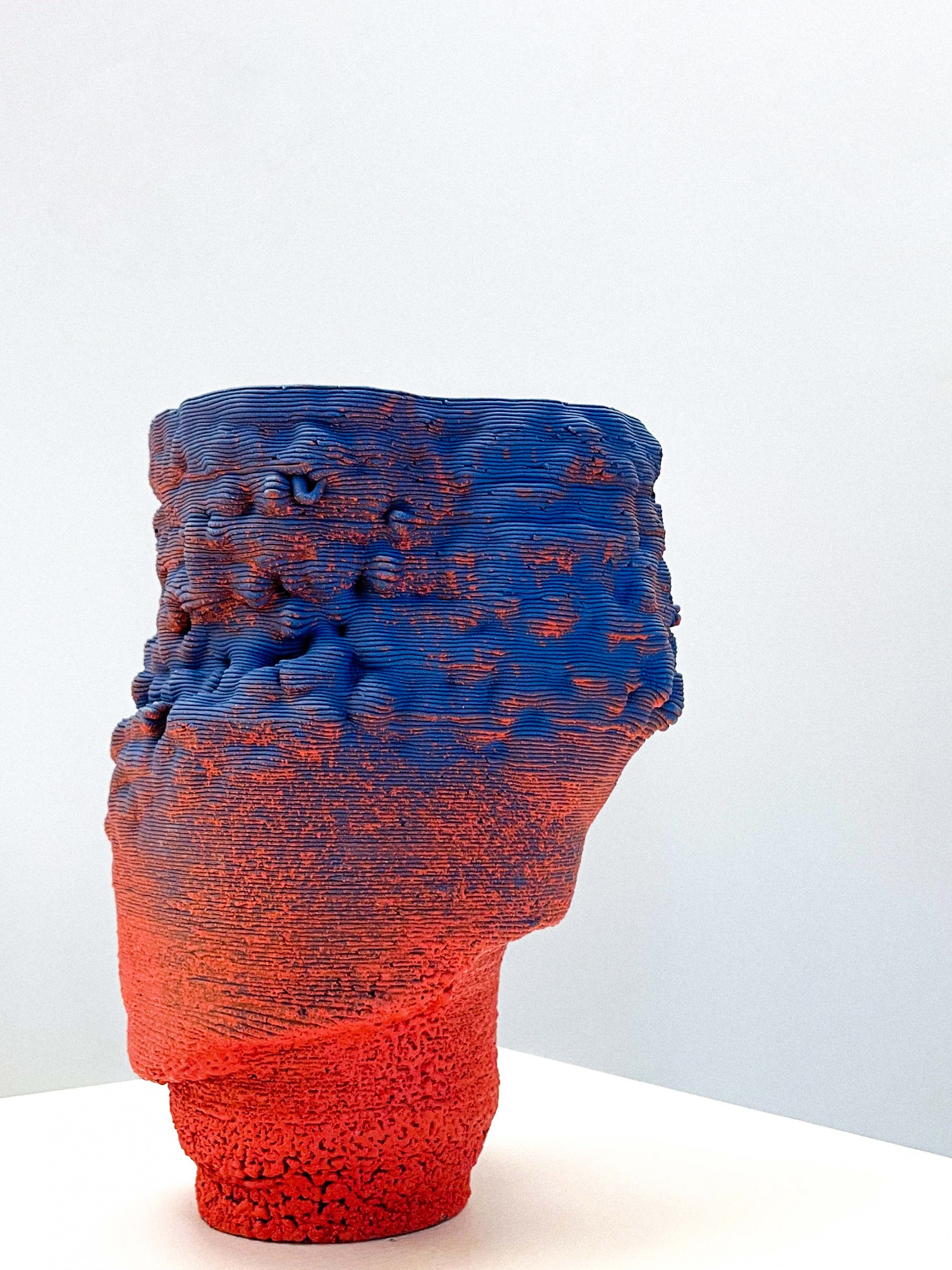
Niklas, 2022, VR Designed 3D Printed Colored Porcelain
Α. Βαζάκας: Σε μια χώρα όπως η Ελλάδα που έχει μικρή βιομηχανική παραγωγή, οι συγκεκριμένες τεχνολογίες είναι «μάννα εξ ουρανού» για τους designers. Θα μπορούσαν να δώσουν σημαντική ώθηση στο εγχώριο design, καθώς, σε έναν βαθμό, μπορούν να αποδεσμεύσουν το design από το εργοστάσιο. Στην προσπάθεια αυτή είναι σημαντική η συμβολή των maker spaces ή των fab labs, τα οποία επιτρέπουν στον καθένα να εξοικειωθεί με τις συγκεκριμένες τεχνολογίες, τόσο σε επίπεδο υλισμικού (hardware) όσο και λογισμικού (software).
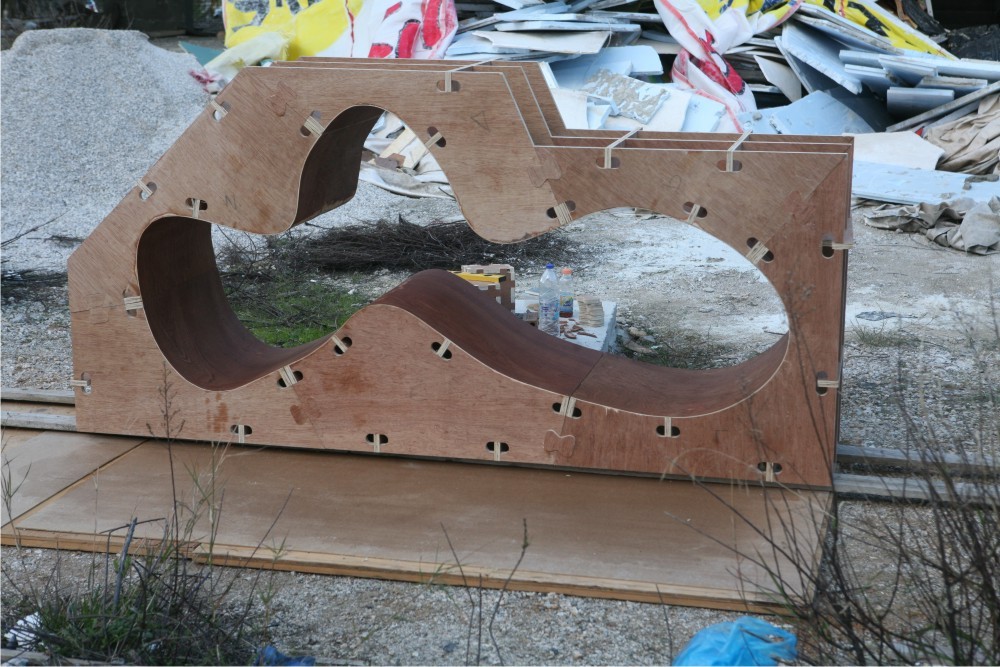
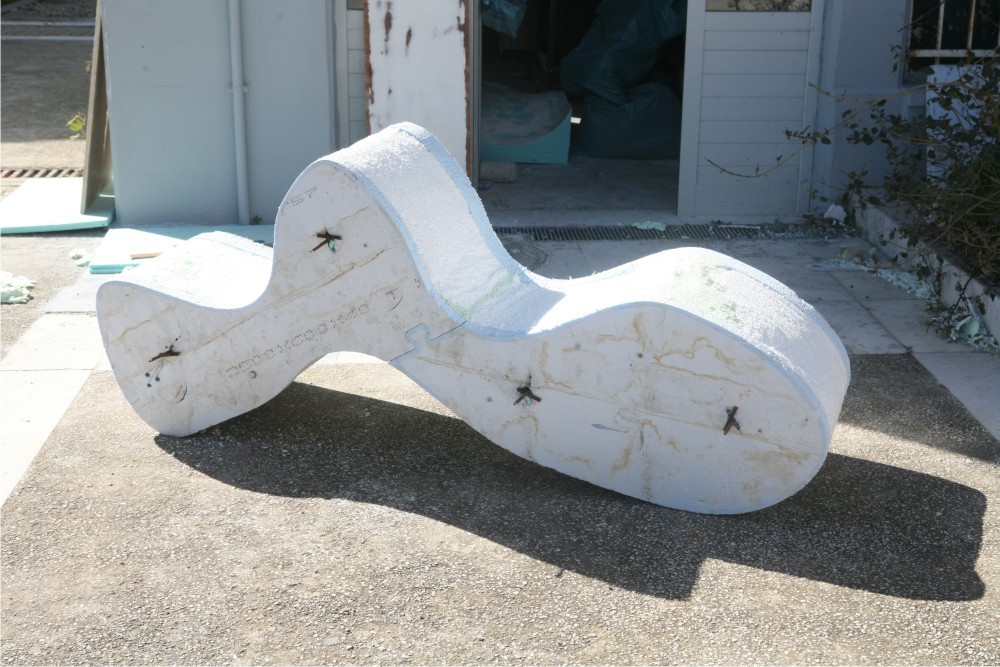
Multi Seating, 2015 | Καθηγητής: A. Βαζάκας, Ομάδα φοιτητών: M. Amargianitaki, A. Tziasiou, M. Penthroudakis, M. Szabala για το μάθημα “Associative Design 1”
Θεωρείτε ότι ο ψηφιακός σχεδιασμός απειλεί τον ρόλο του designer; Υπάρχουν διακριτά όρια μεταξύ υπολογιστή και σχεδιαστή, και πώς προβλέπετε την εξέλιξη αυτής της σχέσης στο μέλλον;
Niklas: Η ακαδημαϊκή άποψη ισχυρίζεται ότι «ο ρόλος του σχεδιαστή είναι να προσφέρει απαντήσεις, στις ερωτήσεις που του παρουσιάζονται». Ταυτόχρονα, η άποψη που έχω σχηματίσει ανά τα χρόνια είναι ότι απαιτούμενο χαρακτηριστικό του designer είναι το να προσφέρει ερμηνείες σε ερωτήσεις που δεν έχουν ακόμα πλήρως σχηματιστεί. Κάτω από αυτές τις σκέψεις, ο ρόλος του σχεδιαστή δεν απειλείται από κανένα εργαλείο ή διαδικασία κατασκευής. Στις απαρχές της μεταβιομηχανικής εποχής στην οποία βρισκόμαστε, η επιλογή του καθενός να οριοθετήσει τη σχέση του με την ψηφιακή τεχνολογία τον ορίζει και ως σχεδιαστή.
Τον τελευταίο καιρό με απασχολεί ιδιαίτερα το όριο μεταξύ ψηφιακού και φυσικού χώρου, κυρίως στον σχεδιασμό εντός ενός VR περιβάλλοντος. Κατά κάποιον τρόπο με συναρπάζει η εξής ιδέα:
Η φυσική διαισθητική κίνηση του χεριού μορφοποιεί άυλους όγκους μέσα σε ένα ψηφιακό περιβάλλον, το οποίο πραγματώνεται σημειακά, σχεδόν αποκλειστικά, στο κεφάλι του σχεδιαστή. Στη συνέχεια, το αποτέλεσμα αυτής της διεργασίας-σκέψης-δημιουργίας υλοποιείται (σχεδόν αναδύεται) πάνω στη βάση του 3D εκτυπωτή, όπου ένα οργανικό υλικό, όπως η πορσελάνη ή ο πηλός, προετοιμάζεται, εκδηλώνεται αλλά και φινιρίζεται στο χέρι. Σε αυτή τη διαρκή εννοιολογική εναλλαγή, μεταξύ του πού είναι η παρέμβαση του σχεδιαστή και πού του «υπολογιστή», τα όρια θαμπώνουν τόσο που δύσκολα μπορούν να γίνουν διακριτά. Με λίγα λόγια, τα εργαλεία είναι προέκταση του μυαλού κάθε δημιουργικού ανθρώπου και λειτουργούν ως τα ακροδάχτυλά του. Ο Λάμπρος Μαλαφούρης έχει ένα πολύ ενδιαφέρον άρθρο με τίτλο «At the Potter's Wheel: An Argument for Material Agency». Θα σας αφήσω με αυτό και με την προτροπή να το διαβάσετε.
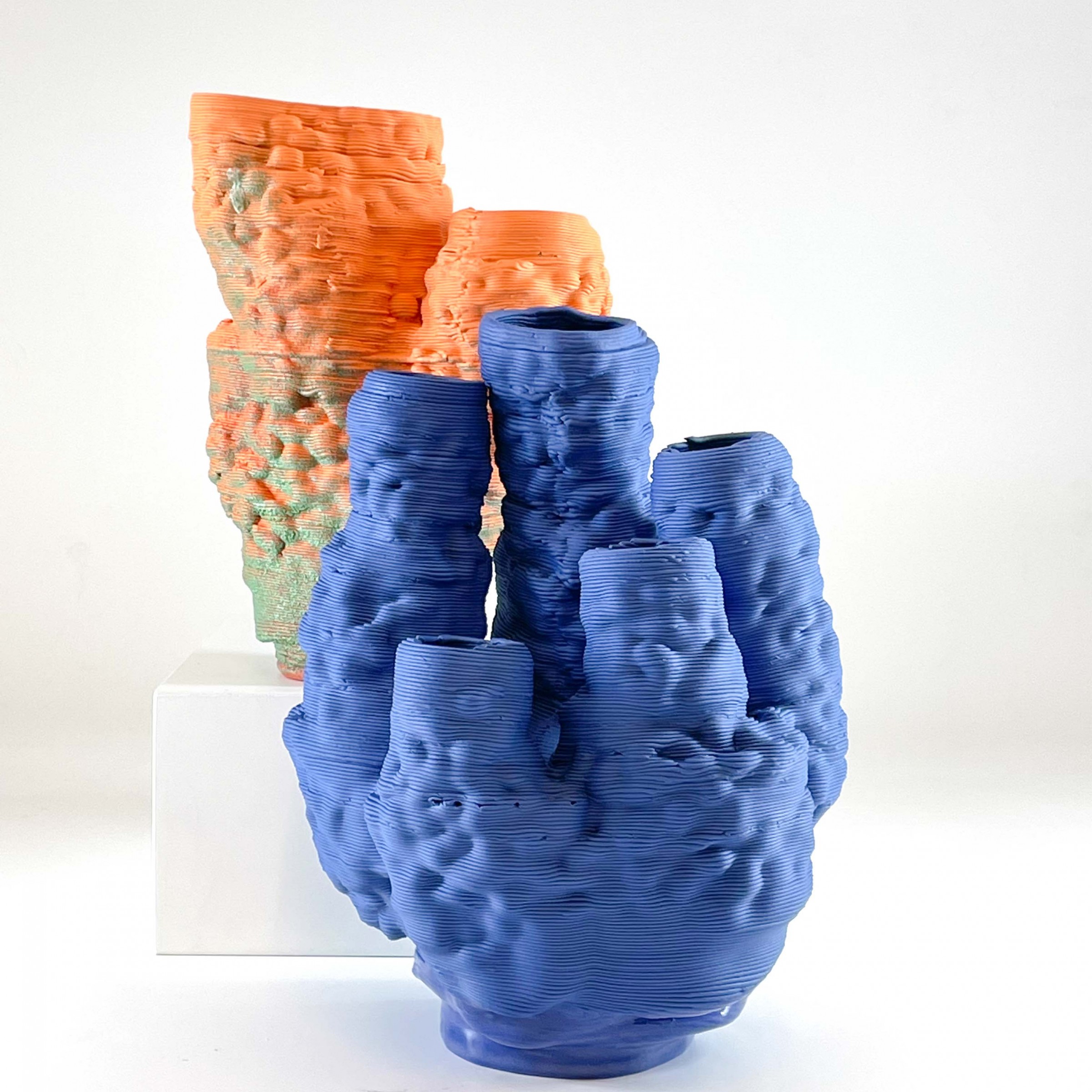
Niklas, 2022, VR Designed 3D Printed Porcelain
Α. Βαζάκας: Σε καμία περίπτωση δεν απειλείται ο ρόλος του designer. Όπως είπα και πριν, το digital fabrication απελευθερώνει το design. Κάθε νέα τεχνολογία έχει μόνο να προσφέρει και αποτελεί ακόμα ένα εργαλείο στα χέρια μας. Οι σχεδιαστές έχουν αγκαλιάσει αυτές τις τεχνολογίες και πολύ συχνά βλέπουμε να χρησιμοποιούν τον κώδικα (προγραμματισμό), είτε για να παραγάγουν μορφές είτε για να προσαρμόσουν εργαλεία στις συγκεκριμένες απαιτήσεις ενός project. Ακόμα, πολύ συχνά βλέπουμε περιπτώσεις όπου προσαρμόζονται εργαλεία hardware, είτε για σκοπούς πρωτοτυποποίησης είτε για κανονική παραγωγή προϊόντων.
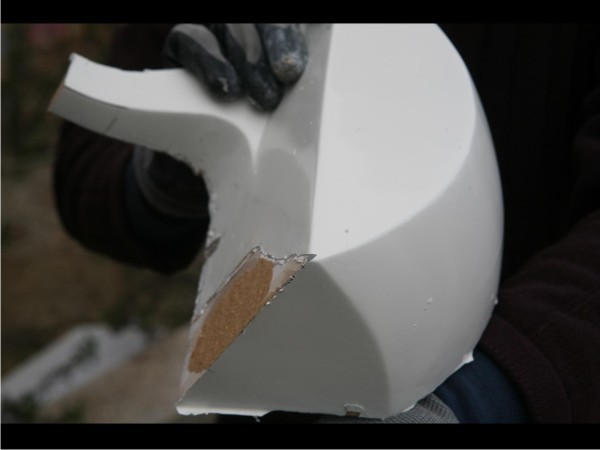




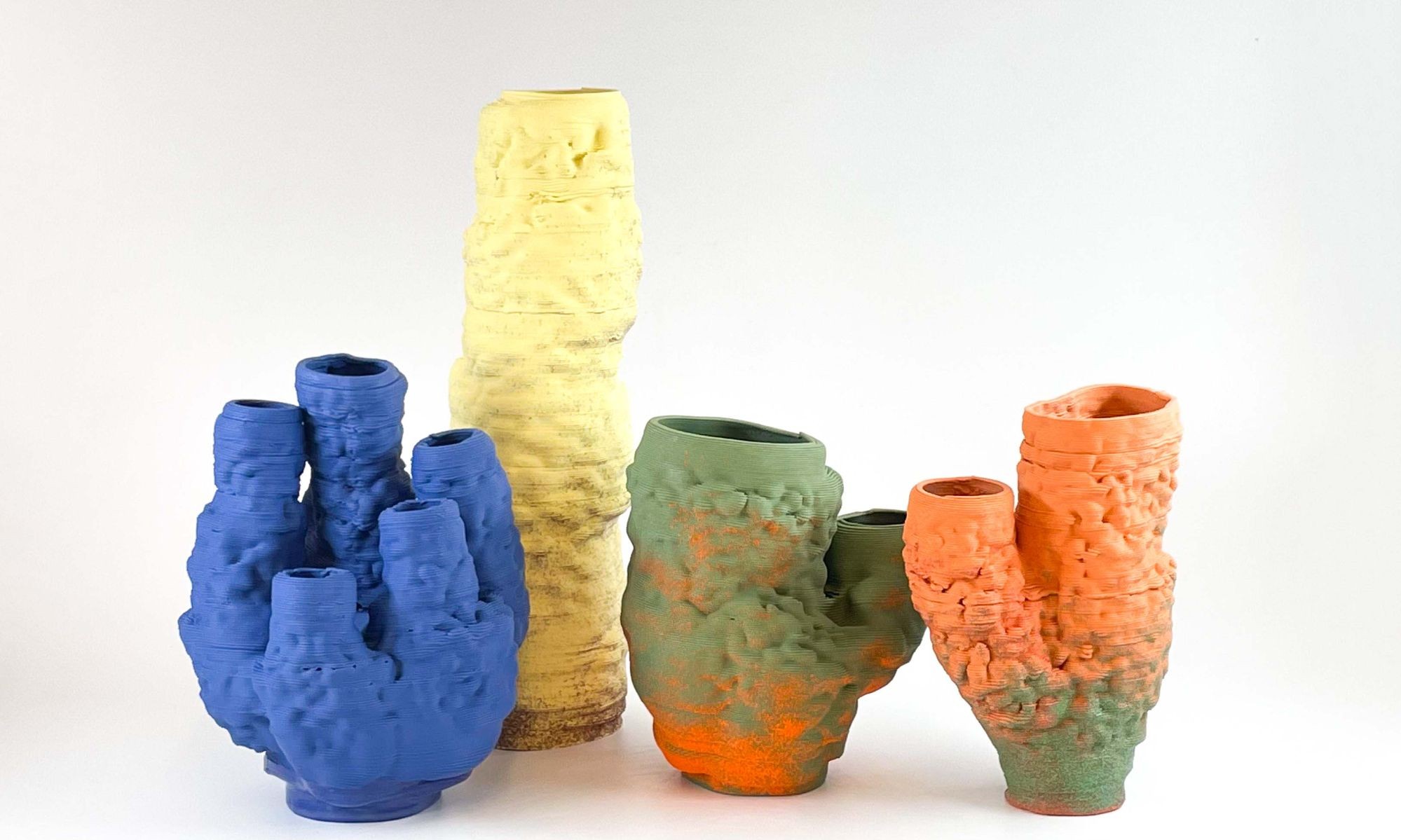

.jpg)